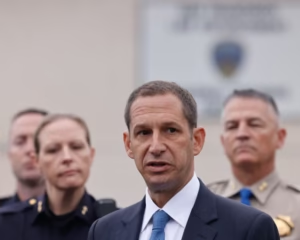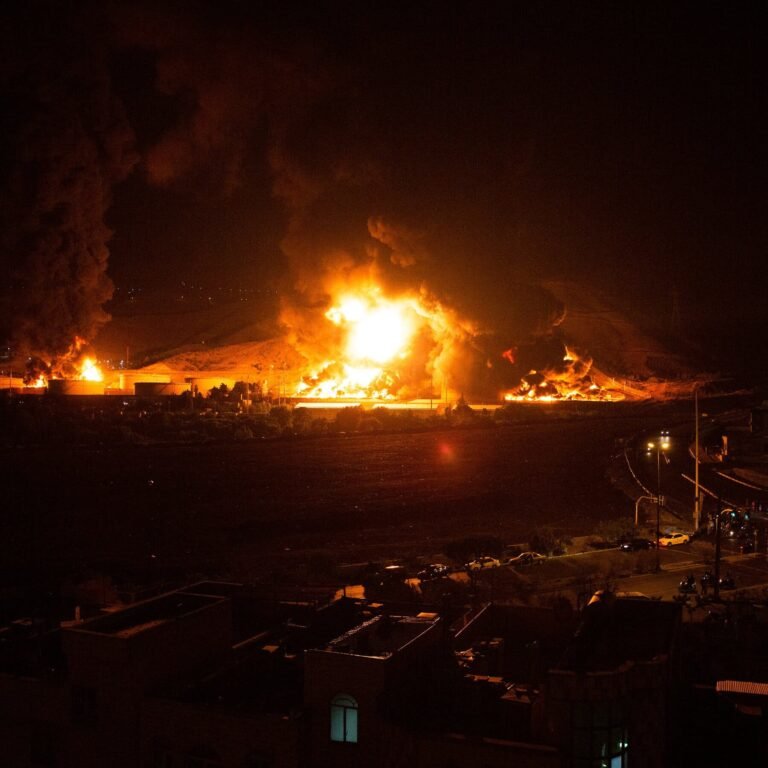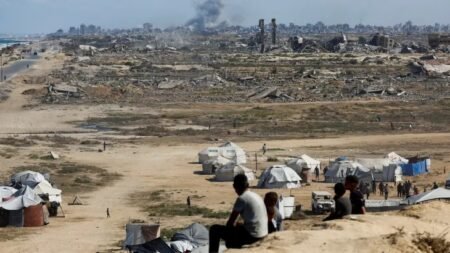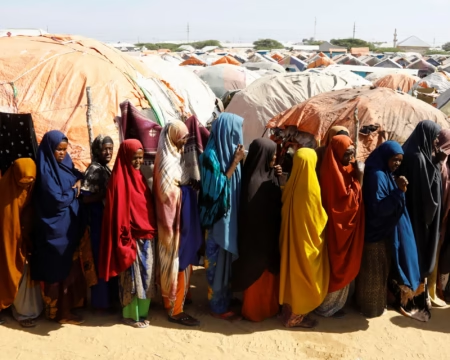The Iran-Israel conflict reached a terrifying new level early Saturday when Iran launched a massive wave of missiles and drones toward Israeli cities. A newly released video from Iranian state television shows the Shahid 136 drones and large ballistic missiles flying together into Israeli airspace. Within minutes, explosions rocked buildings, turning many into ruins and forcing residents to evacuate.
Fire broke out on rooftops. Smoke filled the air. Israeli citizens rushed to underground shelters as flames lit up the sky. This marks the ninth day of rising tensions between the two countries, now locked in direct conflict. Iran has carried out 18 targeted strikes since the start of the clashes, and experts say more attacks are likely.
Iran’s Islamic Revolutionary Guard Corps (IRGC) confirmed Saturday’s attack, claiming they hit key Israeli targets. According to their statement, the missiles aimed at Ben Gurion Airport and military sites in central Israel. They also struck operational support centers. The IRGC called this a planned and coordinated mission to weaken Israel’s defenses.
The weapons used included Iran’s homemade Shahid 136 drones and a mix of liquid- and solid-fuel missiles. These drones have been flying frequent missions over disputed airspace. The IRGC said Israel’s air defense system could not stop the assault. The Iron Dome and other systems failed to stop many incoming projectiles.
The IRGC said the strike was both strategic and symbolic. They warned that the joint drone-missile attacks will continue. Their message was clear: this is not a one-time attack but part of a larger plan. Iran believes these attacks expose the limits of Israeli defense systems.
In response, Israeli military officials confirmed that warning sirens were triggered across the country. Several areas in the West Bank reported incoming missiles from Iran. Officials admitted that the wave of missiles is overwhelming even their strongest defense technology.
Systems like Iron Dome, Arrow, and David’s Sling are struggling to handle the scale and speed of these attacks. Many missiles managed to break through and hit civilian areas. Images from Israeli cities show destroyed homes and flaming rooftops. The destruction paints a clear picture of how serious the threat has become.
Meanwhile, Israel carried out a counterattack. Israeli jets launched airstrikes on southern Iran, hitting what officials called a residential building. A 16-year-old boy was killed in the attack, and two others were wounded. They were taken to a nearby hospital for treatment. So far, Iran has not confirmed what the target was or why it was chosen.
Witnesses in Tehran and Isfahan also reported hearing explosions overhead. The origin and damage of these blasts are still under investigation. Both sides now seem to be moving deeper into a full-scale war, with civilians caught in the crossfire.
Tensions between Iran and Israel have been building for years. However, the past week has seen an unusual level of direct military action. With missile barrages and aerial strikes increasing, international concern is growing. Humanitarian organizations have already warned of a possible crisis if the situation escalates further.
The Iran-Israel conflict now stands at a dangerous point. Both sides are using powerful weapons, and neither is backing down. The growing number of civilian casualties highlights the urgent need for diplomatic talks. Until then, the skies over the Middle East remain a zone of danger and fear.







